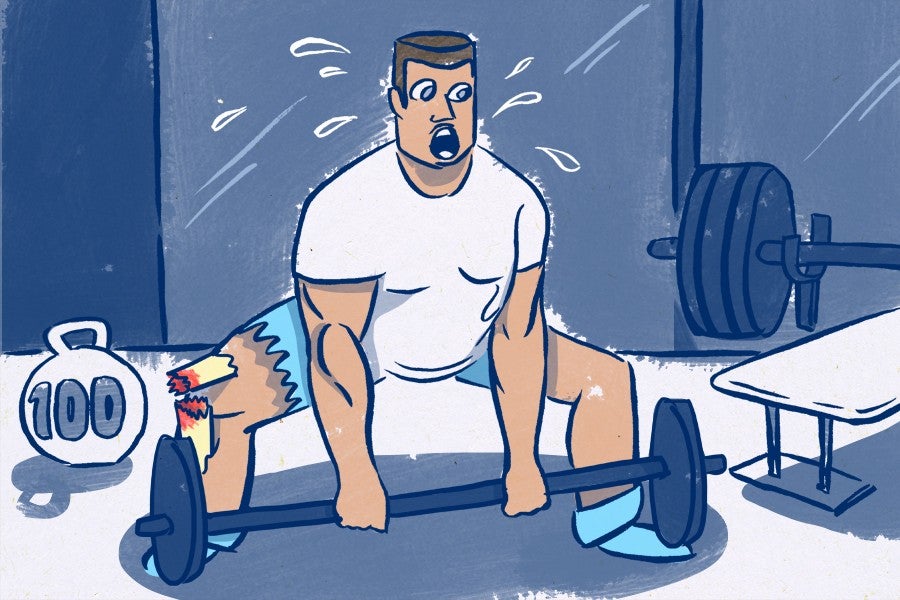Injuring yourself while working out sucks. You’re finally starting to get where you want to be and BAM: a twinge in the neck; a sharp pain in the back; a dull throb in the knee. Whatever it is, it means your workout schedule is going to get derailed, and the last couple weeks’ progress is going down the toilet. It’s such a frustrating feeling that many of us are tempted to try to push through it, but then you face the risk of being out of action for months, rather than weeks, if you make the injury worse. So how do you know when to keep going and when to call it a day?
The answer really depends on the nature of both the pain and the exercise in question, according to physical therapist and running coach Michael Conlon, owner of Finish Line Physical Therapy in New York City. His advice on figuring it out is as simple as it is practical:
“I use two basic rules with my patients when it comes to exercise, because it’s such a gray area, and people don’t know what’s okay to do. First, if you’re feeling moderate to severe pain at the start, don’t even exercise. If you’re limping at the start of a run, for example, that’s not going to warm up or get better with time, so I’d tell you not to run.
“Second, if your pain is increasing with activity, meaning with each step — or each repetition if you’re weightlifting — that’s your body’s way of telling you something’s not quite right, and you’re better off not doing that particular move.”
Still, this doesn’t necessarily mean you need to stop, Instead, Conlon recommends modifying your moves in some way. For example, in the gym, if the pain subsides after you decrease the weight slightly, just do more reps at the lighter weight that day. Failing that, do another activity altogether — something that won’t irritate what’s hurting you. “I’m a big believer in keeping active, so try to find something else that you can do,” Conlon says. “If you’re into weightlifting, maybe do cardio that day. Or vice versa — if you’re a runner, maybe go do some strength training.”
If you think you can comfortably play through the pain, go ahead and give it a try. The only thing Conlon says you should definitely not try to play through is a stress fracture — the pain is both severe and highly localized. (It’s typically an overuse injury, often in the shin for runners, and sometimes mistaken for shin splints.) Any health-care professional will tell you to rest a stress fracture — if you don’t, you could be sidelined for a really long time.
Overall, you should always stay focused on the future. Because if you’re just competing for fun, winning doesn’t mean actually winning the game — it means being able to play again next time.

